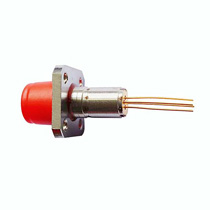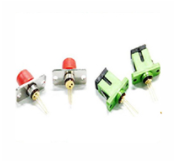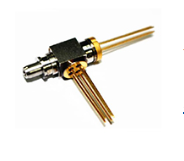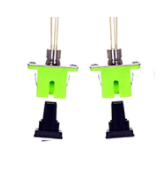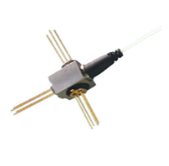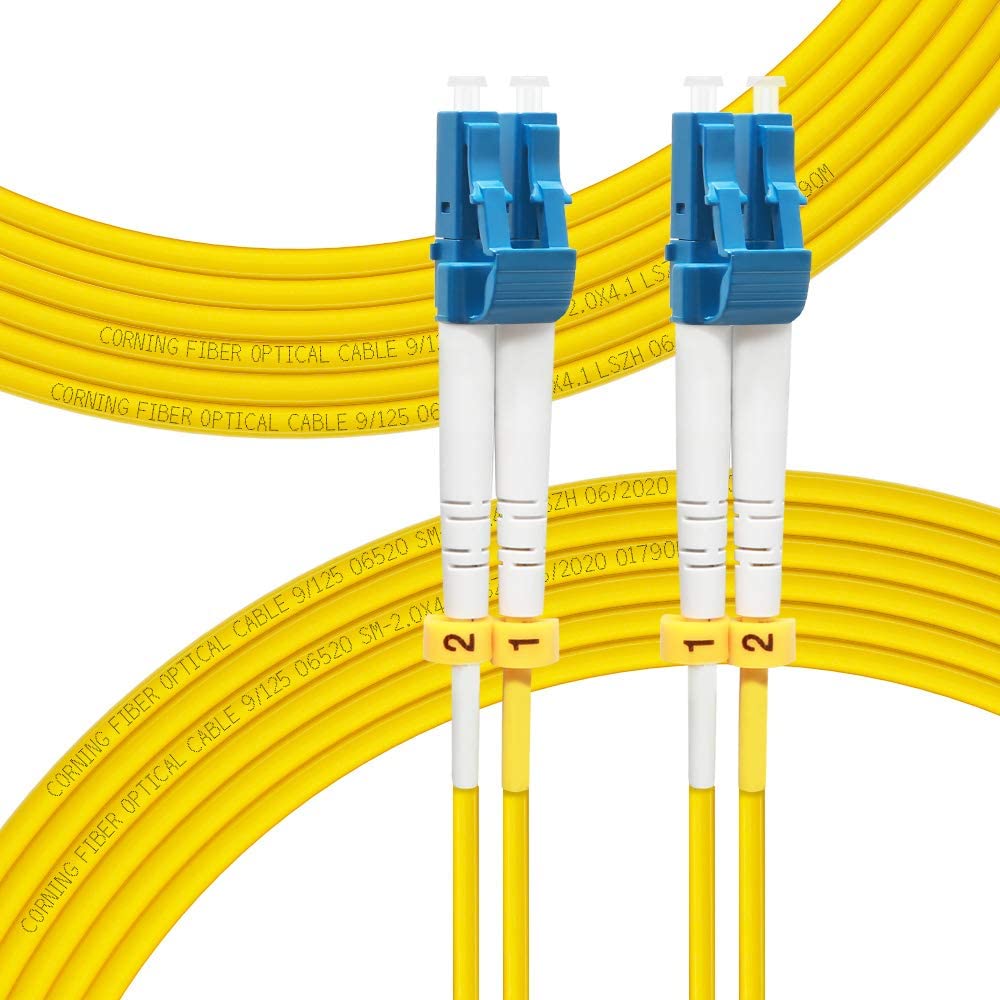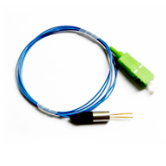Detailed explanation of the relationship between the working distance of the collimator and the waist spot
Abstract: With the rapid development of optical fiber communication, the demand for passive components has increased dramatically. In the working process of optical passive devices such as optical isolators, optical circulators, optical switches, optical attenuators, and optical wavelength division multiplexers, the requirements for the collimation of Gaussian beams are very high, that is, the divergence angle of Gaussian beams is required to be very high. Small, so as to achieve the maximum efficiency of transmission and coupling in the optical path, so that the limited beam energy can be fully utilized, so the fiber collimator is introduced. Its function is to convert the divergent light emitted from the fiber into an approximately parallel beam with a very small divergence angle after collimating, or to converge the parallel beam into the fiber, thereby improving the coupling efficiency of the optical device.
Over the past three decades, optical fiber communication has made great progress. Optical fiber has replaced cables in the field of transmission networks due to its advantages of low loss, large bandwidth, easy upgrade and expansion, and low cost. In the field of access networks, with the implementation of FTTC, FFTTB and FTTH projects, optical fiber has also become the main transmission medium.
Generally, the light source used in the optical fiber communication system is the laser beam emitted from the laser, which is characterized by the Gaussian function attenuation of the field amplitude along the radial direction, and has good monochromaticity, directivity and high intensity. According to the optical waveguide theory, the laser beam propagates as a fundamental mode Gaussian beam in a single-mode fiber, so the propagation characteristics of the fundamental mode Gaussian beam in the medium are the basis for designing optical communication devices. With the rapid development of optical fiber communications, the demand for passive components has increased dramatically. In the working process of optical passive devices such as optical isolators, optical circulators, optical switches, optical attenuators, and optical wavelength division multiplexers, the requirements for the collimation of Gaussian beams are very high, that is, the divergence angle of Gaussian beams is required to be very high. Small, so as to achieve the maximum efficiency of transmission and coupling in the optical path, so that the limited beam energy can be fully utilized, so the fiber collimator is introduced. Its function is to convert the divergent light emitted from the fiber into an approximately parallel beam with a very small divergence angle after collimating, or to converge the parallel beam into the fiber, thereby improving the coupling efficiency of the optical device.
The basic principle of the fiber collimator is to place the fiber end face at the focal point of the collimating lens, so that the beam is collimated, and then slightly adjust the position of the fiber end face near the focal point to obtain the required working distance, so the working distance of the collimator is It is related to the distance L between the fiber head and the lens. The function of the fiber collimator is to convert the approximate Gaussian beam with a small beam waist radius and a large divergence angle output from the fiber into a beam with a large waist spot and a small divergence angle, so as to increase the tolerance to the axial spacing and improve the Fiber-to-fiber coupling efficiency, which allows long distances between the two collimators, and optical components can be inserted to achieve device performance. As shown below:
Working Distance and Beam Diameter are two key parameters describing the collimator. The parameter definitions are shown in the following figure:
Many customers often give the working distance when describing the collimator, but the spot size gives a very loose range, and there is even no definition of the spot size, as shown in the following table: (The spot size range is loose)
In fact, in general, at a position corresponding to a certain working distance of the collimator, with the change of the fiberscope distance d1, two waist spots can appear, one waist spot is relatively large, and the other waist spot is relatively small. The applications are also different: the large waist spot is used for beam collimation, which is often used in passive devices such as wavelength division multiplexers, isolators, and circulators, and the small waist spot is used for beam focusing, which is often used to improve laser coupling efficiency.
We take the C-lens collimator as an example to deduce this phenomenon theoretically:
The main components of C-lens collimator; single fiber Pigtail, glass tube, C-lens, see Figure below:
Single-fiber Pigtail is to insert the optical fiber into the capillary tube, and the glue between the capillary tube and the optical fiber is completely cured, which is convenient for subsequent operations to clamp and fix. The end faces are angled at 8 degrees to improve return loss.
Fiber uses Corning Clear Curve XB.
The left end face of the C-lens matches the single-fiber Pigtail bevel, which is also an 8-degree angle. There is a certain gap d1 between it and the single-fiber Pigtail, which is about the distance between the focus of the C-lens and the bevel end. Choose a C-lens commonly used in the market for calculation, the material is N-SF11, its refractive index at 1550nm is Nc=1.7434, the radius of curvature of the spherical end is R=1.419mm, and the axis length is Z=3.0mm.
Air refractive index N=1
Define the distance between the beam waist of the outgoing Gaussian beam and the end face of the collimator as L1, and the distance between the single-fiber Pigtail and the C-lens as d1 (d1, L1 are shown in the figure above).
Based on the transmission characteristics of Gaussian beams, the ABCD transmission matrix is used to analyze and simulate. The beam exits from the fiber, passes through the air gap d1, C-lens, and finally transmits to the distance from the collimator end face L1. The corresponding matrix group is:
The Gaussian parameters of the fiber output are set as:
At the output beam waist position, when the radius of curvature of the wavefront tends to infinity, the real part of 1/q2 is 0:
According to the above formula, the relationship between the waist spot position L1 and the fiberscope distance d1 can be calculated:
After L1 is determined, the relationship between the exit waist spot diameter ω and the fiberscope distance d1 can be calculated:
embodies the two relational expressions on a chart, see the following figure:
The red curve is the waist position L1, which is divided into three stages:
Stage 1: d1 is at 0.18~0.25mm, with the increase of d1, L1 continues to increase, rising from 0 to infinitely close to 38mm;
Stage 2: d1= 0.25mm, L1 reaches a peak value of 38mm;
Stage 3: d1 is at 0.25~1mm, and L1 continues to decrease as d1 increases, from 38 to 0mm;
Except when L1 reaches the peak value of 38mm, corresponding to the only d1=0.25mm, when L1 is between 0~38mm (excluding 38mm), any L1 value corresponds to two d1 values, and d1 is between 0.18~1.0mm When , the size of the light waist continues to decrease, that is, for the same L1 value, there are two light waists, and the larger the d1, the smaller the light waist.
Actually take a group of materials based on the above collimator structure, and the debugging results are as follows:
When fiberscope distance d1=0.19mm, waist spot position L1=15mm, waist spot diameter W=0.38mm
When fiberscope distance d1=0.63mm, waist spot position L1=15mm, waist spot diameter W=0.04mm
Through the actual debugging, we verified our inference again: there can be two waist spots of different sizes at the same working distance.
Feiyu has been engaged in the production of collimators for more than ten years. In the debugging process of the collimator, a high-precision spot machine imported from abroad has been introduced. Combined with the precision adjustment machine and the unique fixture, it can effectively and accurately control the designation of the collimator. The waist spot size of the working distance can fully meet the various collimator requirements of customers.
With years of production technology accumulation, Feiyu can currently manufacture various types of collimators. Including PM/CWDM/DWDM/FWDM collimators, the outer diameter is from 1.0mm~10mm, the working distance is from 0~1000mm, the spot size is from 20um~6mm, the wavelength range is from 700~1700nm, and various other customized collimators .
 How to Select Optical Modules for Switch Stacking?
How to Select Optical Modules for Switch Stacking?
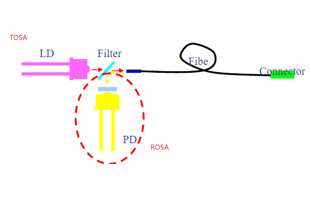 Optical module introduction
Optical module introduction
 In 2026, the global optical transmission DWDM equipment market will exceed 17 billion US dollars
In 2026, the global optical transmission DWDM equipment market will exceed 17 billion US dollars
 Jiuzhou Opto-electronics Main Products
Jiuzhou Opto-electronics Main Products

